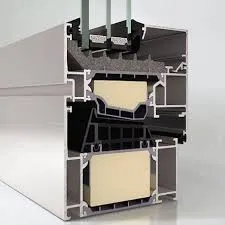Aluminum Sliding Wheel for Enhanced Durability and Performance in Various Applications
The Advantages and Applications of Aluminium Sliding Wheels
Aluminium sliding wheels, characterized by their lightweight, durability, and resistance to corrosion, have become increasingly popular in various industries and applications. These wheels offer numerous benefits that make them a go-to choice for manufacturers and consumers alike.
Lightweight and Strong
One of the primary advantages of aluminium sliding wheels is their lightweight nature. Aluminium weighs approximately one-third as much as steel, making it easier to handle and maneuver. This weight reduction can significantly impact products that require mobility, such as carts, dollies, and other equipment that needs to be routinely moved. Despite being lightweight, aluminium is incredibly strong and can support substantial loads without bending or breaking, making it ideal for heavy-duty applications.
Corrosion Resistance
Another significant benefit of aluminium sliding wheels is their resistance to corrosion. Unlike steel, which can rust when exposed to moisture, aluminium forms a protective oxide layer that helps prevent degradation. This property is particularly advantageous in environments where wheels are subject to exposure to water, chemicals, or salty air, such as in marine applications, food processing, or outdoor furniture. Consequently, aluminium wheels can maintain their appearance and functionality over a more extended period, leading to lower maintenance costs and increased longevity.
Versatility in Design
Aluminium sliding wheels are highly versatile and can be manufactured in various designs and sizes to meet specific needs. They can be cast, extruded, or machined into complex shapes, allowing for customized solutions that perfectly fit particular applications. This flexibility in design enables manufacturers to create wheels tailored to distinct requirements, whether for ergonomic purposes, aesthetic appeal, or performance optimization.
aluminium sliding wheel

Eco-Friendly Choice
Sustainability is a growing concern for many industries, and using aluminium can be part of an eco-friendly strategy. Aluminium is highly recyclable; almost 75% of the aluminium ever produced is still in use today. When aluminium wheels reach the end of their lifecycle, they can be easily melted down and reformed into new products without losing their inherent properties. This recyclability contributes to lowering overall environmental impact and supports the circular economy.
Applications Across Industries
Aluminium sliding wheels find applications in a variety of sectors. In the industrial sector, they are commonly used in conveyor systems, enabling efficient movement of goods along assembly lines. Their lightweight nature makes them perfect for trolleys and carts in warehouses and retail environments, reducing fatigue for workers who frequently transport materials.
In the automotive industry, aluminium wheels are often integrated into vehicles, providing a lightweight option that enhances fuel efficiency without compromising performance. Similarly, in the realm of recreational vehicles and trailers, aluminium sliding wheels offer a resilient option that can withstand the rigors of travel.
Even in the furniture industry, designers are increasingly incorporating aluminium wheels into their creations. From office chairs to rolling tables, the lightweight and stylish appeal of aluminium enhances functionality while maintaining a modern aesthetic.
Conclusion
Aluminium sliding wheels represent an innovative and practical solution for numerous applications. Their lightweight, durable, and corrosion-resistant properties make them ideal for a wide range of industries, from manufacturing and automotive to furniture design. Additionally, their eco-friendly characteristics and adaptability to various designs add to their appeal. As technology continues to advance, the potential for aluminium wheels will likely expand, offering even more opportunities for creative and efficient applications. With their myriad benefits, aluminium sliding wheels are undoubtedly set to play a pivotal role in the future of mobility and design.
-
Wrought Iron Components: Timeless Elegance and Structural StrengthNewsJul.28,2025
-
Window Hardware Essentials: Rollers, Handles, and Locking SolutionsNewsJul.28,2025
-
Small Agricultural Processing Machines: Corn Threshers, Cassava Chippers, Grain Peelers & Chaff CuttersNewsJul.28,2025
-
Sliding Rollers: Smooth, Silent, and Built to LastNewsJul.28,2025
-
Cast Iron Stoves: Timeless Heating with Modern EfficiencyNewsJul.28,2025
-
Cast Iron Pipe and Fitting: Durable, Fire-Resistant Solutions for Plumbing and DrainageNewsJul.28,2025
-
 Wrought Iron Components: Timeless Elegance and Structural StrengthJul-28-2025Wrought Iron Components: Timeless Elegance and Structural Strength
Wrought Iron Components: Timeless Elegance and Structural StrengthJul-28-2025Wrought Iron Components: Timeless Elegance and Structural Strength -
 Window Hardware Essentials: Rollers, Handles, and Locking SolutionsJul-28-2025Window Hardware Essentials: Rollers, Handles, and Locking Solutions
Window Hardware Essentials: Rollers, Handles, and Locking SolutionsJul-28-2025Window Hardware Essentials: Rollers, Handles, and Locking Solutions -
 Small Agricultural Processing Machines: Corn Threshers, Cassava Chippers, Grain Peelers & Chaff CuttersJul-28-2025Small Agricultural Processing Machines: Corn Threshers, Cassava Chippers, Grain Peelers & Chaff Cutters
Small Agricultural Processing Machines: Corn Threshers, Cassava Chippers, Grain Peelers & Chaff CuttersJul-28-2025Small Agricultural Processing Machines: Corn Threshers, Cassava Chippers, Grain Peelers & Chaff Cutters












